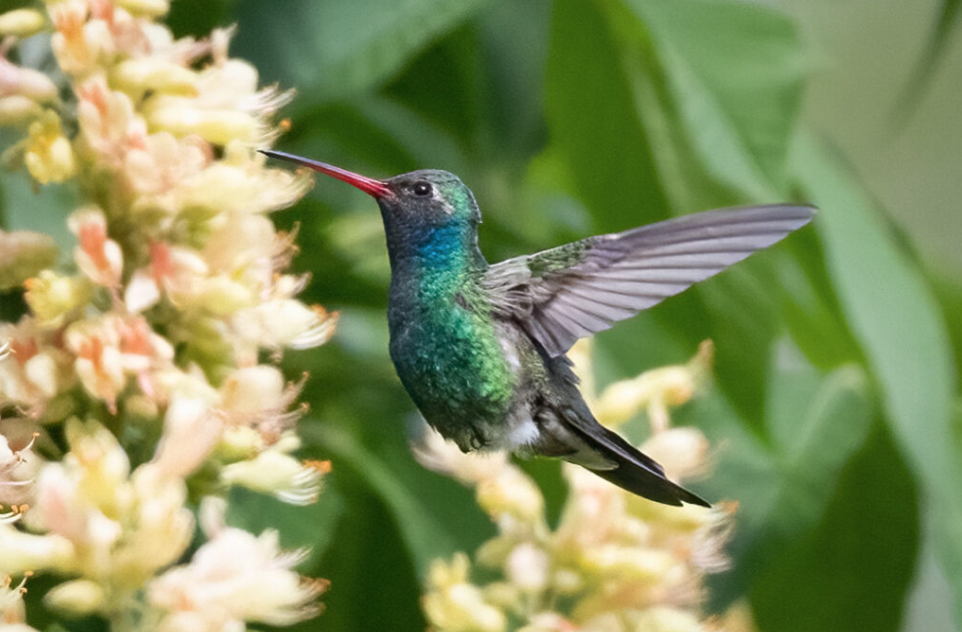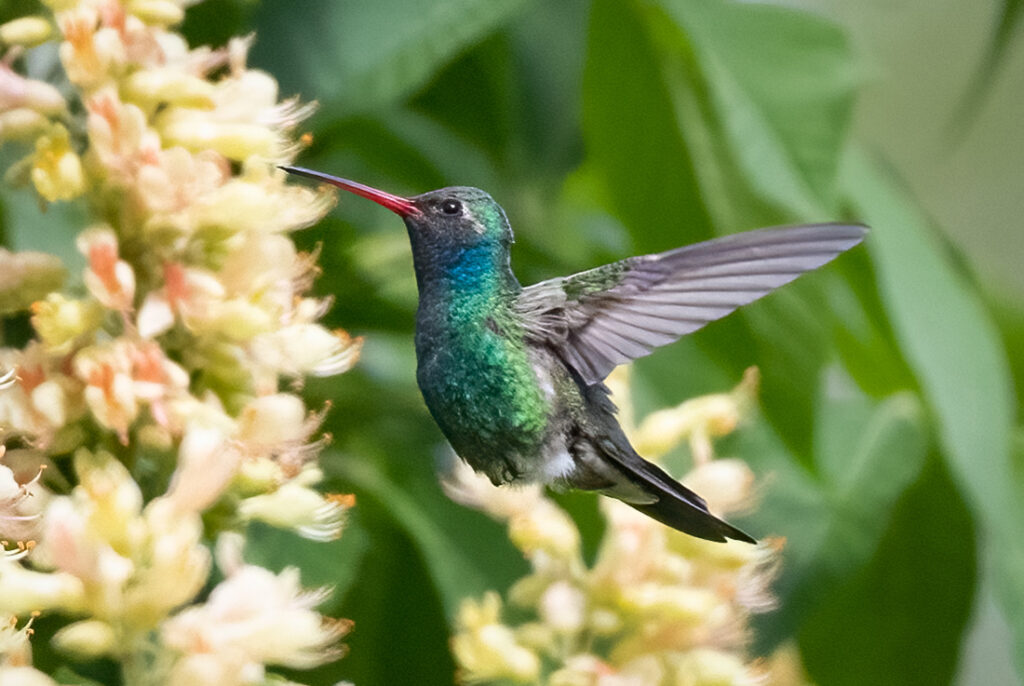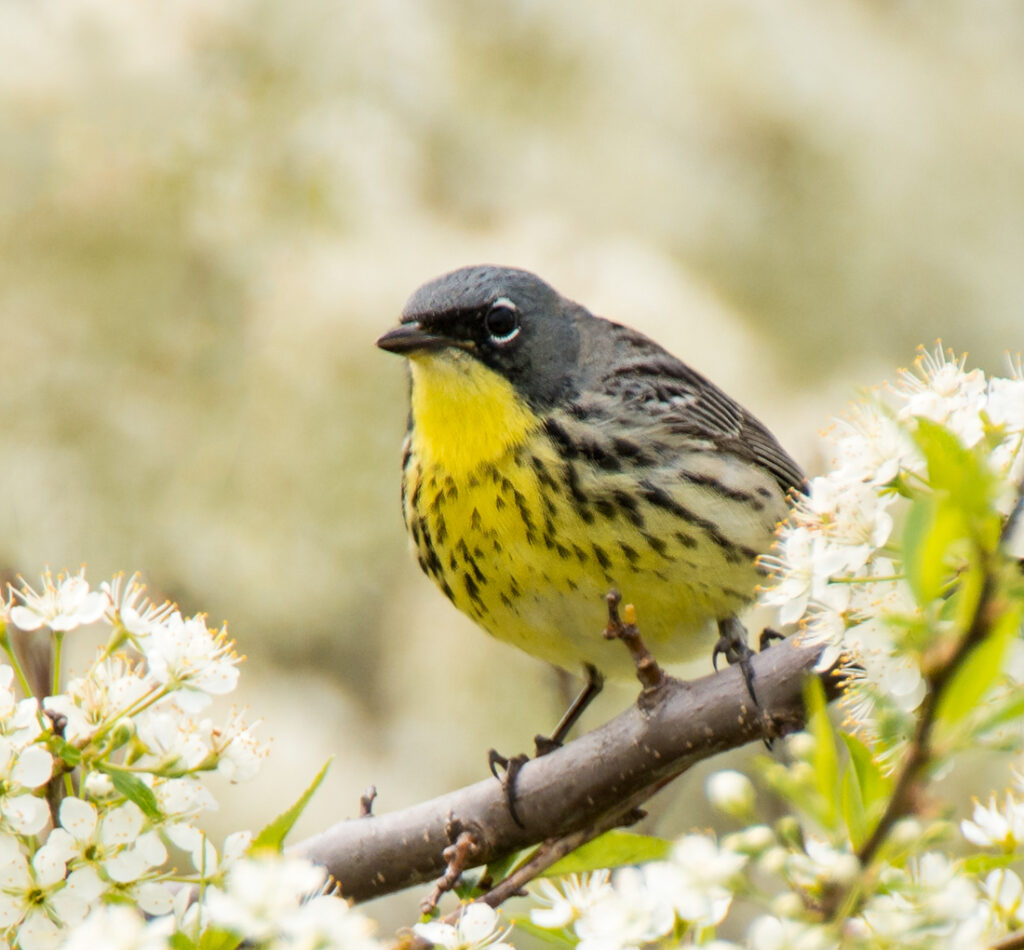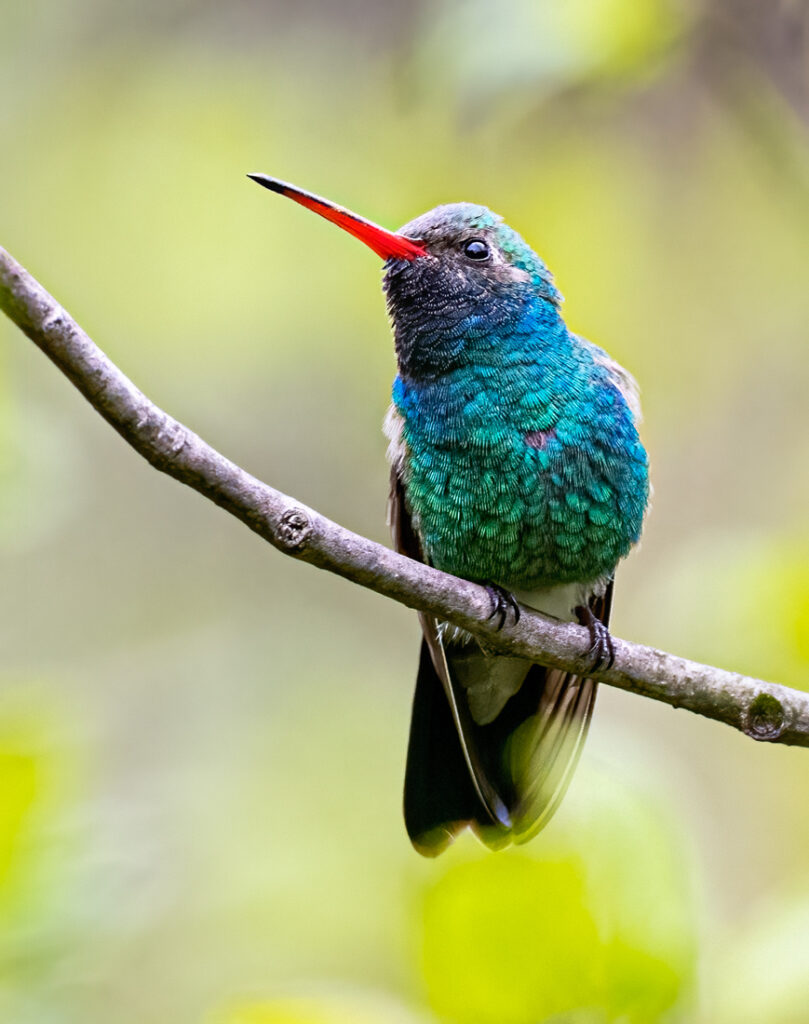
All birds are amazing to photograph with their own special beauty, but there is something extra special about an unexpected bird. I have had several opportunities to have such special experiences with surprising birds, and one of the most memorable was the tremendous appearance of a broad-billed hummingbird at LaBagh Woods, 80-acres of mixed woodlands, wetlands, and sedge meadows on the north side of Chicago.

A Broad-billed Hummingbird’s Long Journey
Hummingbirds are spring and summer residents in Chicago as ruby-throated hummingbirds (Archilochus colubris) arrive for the breeding season, but a broad-billed hummingbird (Cynanthus latirostris) is more than unusual – it’s extraordinary. These birds are normally found in Mexico and only go as far north as southwestern New Mexico and southeastern Arizona. To find one 1,500 miles from its normal range is practically unheard of, and these birds have only been recorded three times in Illinois history – once in 1996, again in 2017, and, to my delight, in 2021.
What are Vagrant Birds?
But why do birds stray so far from their typical locations? These are vagrant birds, individuals that unexpectedly appear well away from where they are usually seen. Such birds might be blown off course by storms during migration, or could simply have broken internal compasses that send them in the wrong direction. Habitat loss may drive birds far out of range as they search for food and shelter, or vagrants may simply be lost because of their own inexperience migrating.

I’ve been privileged to enjoy a whole flock of vagrant birds over the years. Another memorable sighting was the Kirtland’s warbler (Setophaga kirtlandii) at Montrose Point Bird Sanctuary. While Montrose Point is a well-known birding hotspot along Chicago’s northern lakeshore, the Kirtland’s warbler was a startling sight. These distinctive birds spend their summers in isolated pockets throughout Michigan and Wisconsin, but aren’t commonly recorded in Illinois.
Vagrant birds have much to teach us. Not only do they give us the chance to see unique birds so far from where they may be expected, but vagrants also teach us a great deal about habitats. Amazing birding hotspots such as LaBagh Woods and Montrose Point Bird Sanctuary aren’t just great spots for birding, but because they’re diverse, protected habitats, they’re great spots for all manner of birds to find respite.

It’s a blessing when a bird’s unexpected appearance draws attention to how important even smaller preserves can nurture amazing wildlife. The more people realize just how critical natural spaces can be, the easier it will be to preserve broad swaths of essential habitat. A tiny bird like a broad-billed hummingbird or the Kirtland’s warbler doesn’t need much room to feel at home, as these vagrant guests have demonstrated, but every bit of habitat can help more birds and wildlife.
Ultimately, what might happen to vagrant birds after their few days of celebrity status is unknown. Many vagrant birds sadly vanish and may succumb to predators, unfamiliarity with food and shelter, or the simple stress of being in an unknown location so far from home. But while they are part of our lives, they bring joy, excitement, and awareness, and that’s as much as we can ask and hope for from any encounter with the nature’s outstanding beauty.


